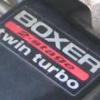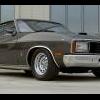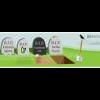Pics can be found in this thread but they are all general pics i took during my build, not really specific to the guide.
Im writing this guide to give people who may be considering a short engine rebuild, a little insight into what is required, and therefore make a decision as to whether they wish to risk trying it themselves.
Please note that im not a professional mechanic, or engine builder, but rather someone who has above average skills and the inclination to try anything once (mind you, ive built 3 subaru engines now and my own twice, and had no failures attributed to my negligence or error. My only fail was due to reusing a set of head studs that fatigued.
. That’s not to say, that this information is an absolute perfect list or instruction. Id much prefer if any potential engine build is researched and checked by someone who knows what they are doing. This guide is merely to assist with a build. If I have omitted any steps, or made an error, I will rectify asap, so please don’t flame me. It is a guide based on my memory of my experience, and should be treated as any information sourced on the web, it is not a explicit 100% correct instruction. I take no responsibility for errors made by anyone attempting to follow this guide.
The golden rule in carpentry, is measure twice, cut once. The same applies. Measure, and remeasure before commiting to anything.
Cleanliness is absolutely necessary> Do NOT WORK WITH DIRTY HANDS. Make sure your work area is clean and uncluttered.
Cover any machined parts overnight with clean dry cloths.
If you were to apply a complexity guide to engine building as you would with say Jaycar electronics kits, then id rate engine building as a skill rating of ‘experienced’ and not something that a ‘hobbyist’ should attempt, as the dollar investment is high and the ability to make mistakes that render those dollars wasted is a medium to high risk.
Therefore, only contemplate doing an engine build if you are fairly versed in automotive maintenance techniques. Bolt torqueing, gasket surface preparation, lubrication of new parts and dummy assembly are all things that are needed to make the engine build successful.
The start point of any build should be an evaluation. What is really needed? What do you want to achieve? Can it be done cost effectively with a used engine or is it a better choice to buy a Subaru ‘crate’ motor?
For all intents and purposes, if I were to start with nothing.. let’s say you are the atypical RS liberty owner. You have a 16+ year old engine; you want more performance, what are your options?
The way I see it, the RS motor is only good for its closed deck block. Great if you want to resleeve with 2.2 liners and build a forged 2.2. Otherwise, throw it away..
If you intend staying with 2lt, then the absolute best bet is to buy a ej207 crate motor. Its brand new, its got warranty, its got factory forged pistons, and it will last you a good long time and be capable of 250kw with supporting mods and v3/4 heads..
EJ25 - If you want great street manners and good torque, go a 2.5.
Factory EJ255 / 257 - Great option, just tear down and replace Pistons, or Pistons and rods.
rebuild - You can pick up a N/A open deck EJ25 block from anything late gen2 liberty onwards. It doesn’t really matter, other than which journal sizes and thrust block you get.
With Ej25 there are 52 and 48mm journal cranks, which have rear or centre thrust bearings. This is needed to be known before ordering bearings.
So for intents, ill start the build with a N/A Ej25 block. (or a Ej255,257 with the semi closed deck if you are lucky enough to have one)
Tools:
- 3/8 drive socket set
- 3/8 to ½ adaptor
- ½ torque wrench
- Piston ring gap filer
- Feeler guage set
- Vice
- Jewellers file set
- Mallet / hammer
- Pliers
- Needle nose pliers
- Digital vernier caliper
- 14mm hex 'allen key' socket
- air compressor with blower accessory
Lets assume the engine has a decent amount of klms on it. There are some things that will need replacing, therefore ill start with a parts list:
- Block o ring set, consists of 4 O rings that are fitted between the block half oil galleries, and water galleries
- 6 bolt seals for crankcase bolt set
- Crankshaft front and rear main seals
- Oil pump o ring
- Sealant (I use three bond motorcycle sealant but you can use permatex ultra grey, or other fuel and oil proof sealant)
- Conrod Big end bearings (measure journal size to determine which type)
- Main bearings (determine whether centre or rear thrust to choose correct set)
- Pistons (if you are rebuilding, then forged pistons are worthwhile)
- Conrods (you can retain the factory2lt turbo rods if you have 52mm journals and don’t intend to go much over 200-230kw, otherwise buy forged rods)
- Oil pump (a new oil pump is worth buying – though you can dismantle and inspect the old one, and if it is not overly worn**, retain it.) **overly worn will be only measurable if you know the factory clearances)
- Water pump – it’s a cheap item, and needs replacing anyway.
I cannot give you an accurate list of costs, but can give a guide based on my expenses:
- Machine block - |Deck face and hone- $390
- Machine crank – Linish crank to size bearings - $220
- Pistons and rods - $1290 (Mahle and Manley, bought in AU therefore more expensive)
- Gaskets - ~$400 for complete gasket set, including head gaskets
- Sundries – lubes and other - $100
Purchasing parts
Once you have determined whats required, you can then go about getting pricing for your parts list. I personally have found everything is available through Ebay, US sellers, and at great deal cheaper than you can get here in Australia. Most sellers do ‘package’ deals for Pistons and Rods. CP/Eagle and Wiesco/Manley are combinations ive seen cheaply, usually between $700-900 (depending on exchange rate).
** Assumption – I assume you will have a good machinist do all checks and machine to specs, therefore im not going to talk about checks with dial gauges etc. This does place an implicit level of trust in the machinist however, so choose your machinist wisely.**
Before ordering anything though, strip down your block, and take your block and crankshaft to a good machinist to measure the bores, and crank journals to determine wether you need undersized or std clearance bearings, and std or oversized pistons. It is wise to find out the factory clearance specs for the crankshaft / engine you have, and take this along to the machinist too. He may not know subarus well.
As a rule of thumb, unless there are gauges or grooves in the bores, std sized (99.5mm)forged pistons can be used, as forged pistons require extra piston to wall clearances and the required machining is usually within tolerance. If the block needs more than a hone, youll likely need to go for oversize pistons (99.75mm)
The machinist will tell you this anyway, and also measure the journal sizes of the crankshaft. If its in good nick, then a linish may be all that’s needed to retain std bearing sizes and give the required bearing clearances. I chose .002” for my big end bearings, and the mains vary between .0012” and .0015” (they vary from the factory between the thinner and thicker bearings in the crank tunnel). To acheiev this on my crank, it merely needed linishing.
Then once you know your sizes, you can go and order your parts online.
**Assumption – I assume you will use selected parts to build the engine to achieve standard compression ratios such as the std range of pistons in the 8.5:1 range, but if you choose to do different, you need to do more calculations to ensure things will work together, such as quench, piston to head clearance, combustion chamber size (in your cylinder heads) so a useful tool for this can be found here http://www.rbracing-rsr.com/compstaticcalc.html **
Once the parts arrive, you can supply the block, crankshaft, bearings, conrods and pistons to the machinist, and have him do the machining of the parts. If you are unsure with clearances, then be honest with your machinist and let him choose the clearances he see’s best. You can do research yourself and talk to some more experienced Subaru rebuilders, I chose my clearances based on tis spec sheet from cosworth I found for a big hp ej..



If you intend to track the engine at any stage, then id most definitely use .002” on the big ends, as subarus are notorious for doing big ends when tracked with factory (very tight) clearances.
If you chose to retain the 2lt turbo rods, then youll want to have them measured and if they need it, closed and honed. This is where you find its usually just cheaper to buy forged rods in the first place as the machine work can be more than the cost of a set of new rods.
If you did what I advised and bought new rods, the machinist will just need them to check big end clearances with the bearings installed to linish the crank journals.
Once you get your bits back from the machinist, you need to clean things.
Make a list and check off – this stuff can all be bought in advance..
- Large can wd40
- A roll of lint free cloths
- Some soap impregnated scourers
- A toilet brush
- A toothbrush
- A large tub big enough to hold a block half and allow you to work in it
- Degreaser – doesn’t matter what brand, buy a 4 lt
- Some kerosene – 4 lt or so
- Find a neodymium magnet – such as the ones in a computer hard disk. Dismantle it to get it out (of a dead drive)
- Some good rubber gloves
After each clean, blow out the oil gallery holes with compressed air, make sure there is no crud in there. Blow out the cylinder head bolt holes with compressed air to make sure no swarf is still in there. Do this while the block is still hot. Make sure you wear eye protection.
Repeat the cleaning cycle with fresh water, and do it enough times that the water doesn’t change colour after a good wash, or that no more crud comes out of the block halves. All it consumes is time, so make sure you do it right, it doesn’t hurt to clean too much..
Once the block halves are thoroughly clean, you can then get some lint free cloth, cut a strip long enough to wrap around the magnet 3-4 times, then spray it dripping wet with wd40. Now, use this to ‘clean’ the cylinder bores. You’ll be amazed how much metal comes off the bores, which look clean to start with. Then wipe each bore with a lint free cloth and wd40 until the cloth doesn’t change colour. Again, repeat ad infinitum..
Clean the crankshaft by blowing the oil galleries out with compressed air, and then clean with a lint free cloth and wd40
Clean the rods with wd40
Dummy assembly time
Have a read of this article http://www.acl.com.a...0a?OpenDocument
New rod fastners are going to stretch. You want to have this happen in a controlled way, and do it prior to installation in the engine. There are specific tools to measure bolt stretch, but for the amateur engine builder, they are out of reach unless you know someone. We aren’t revving our engines to stratospheric levels, so this technique will suffice.
First thing youll want to do is undo the conrod end caps. Theres a trick to this. First, and very importantly, mark each rod and end cap with a number, on one side of the cap so that you can put each cap back exactly where it is now. If you reverse the caps, it can change the clearances. I used a permanent marker for this, but your machinist may have already punched each one with a pinpunch ?
Undo each nut with the correct socket, but don’t remove, unthread it enough to have 4-5mm of free thread on each side, then grab the rod cap with 2 finders, and tap the bolt with a small hammer, firmly. This will knock the rod down and free it from the cap. This is the safest way to avoid damaging the end cap or bearing faces.
Now we need to stretch the conrod bolts.. To do this, youll need to put each rod in a vice upside down, undo the cap bolts and lubricate the threads with light machine oil.
Now, we want to torque the rod cap nuts up to the recommended spec, in stages. The ARP2000 fasteners used in most rods come with recommended specs. Start by tightening to 1/3 the spec on each fastner, then 2/3, then full spec, then go 5nm further on each fastner.
Do this for each rod, and when they are all tightened, undo them starting with the frst you did. They are now stretched sufficiently to assemble.
Now you want to assemble the conrods on the crankshaft, and check their end float clearances.
Fit a bearing shell to each rod and end cap, they are installed dry, no lube between the shell and the conrod. make sure the tangs sit in the groove in the rod. Use assembly lube on each bearing shell on the crankshaft face. How much is up to you. I squeeze a good fingernail amount and wife it over the shell with my finger.
Use the same assembly method as above, and fit each rod to a crank journal. Mark each rod so that you use it on that journal only each time we assemble.. ie #1 for cyl 1 journals and so on.
Tighten the fastners to the spec supplied with the rods, Check the rod spins nice and freely on the crank journal.
Now check with a feeler guage between the rod and the crankshaft for side to side movement, there is a pre determined amount that it should have as a minimum. If this gap is too small, the rod will bind when it heats up and do damage to the crank. Most conrods are pre machined at the factory to ensure this end float is right, but it pays to check.
Once you’ve checked end float, and all 4 rods spin freely (stand them up vertically with the crank on the benchtop), they should fall down quickly and smoothly and not bind anywhere, you can now install the crank main bearing shells into the block halves.
Remove each rod from the crank, and line them up on the bench in the order you remove them from.
Bearing shells are again installed dry, nothing behind each shell. Make sure the tangs sit in the grooves in the block, and that the oil supply holes in each shell lines up with the hole in each block half. Not all journals in the block have a supply hole, some have a groove,.
Once the bearing shells are installed, put some assembly lube on each bearing shell, wiping it around with your finger.
Now lower the crankshaft into the cylinder block, and make sure the thrust bearing is not too tight (theres a measurement for this, but given you are using aftermarket bearings, it wont be as per the factory spec any more. For a suby crank, we want a minimum of .004” end float. Check this with the crank in each half of the block (lay the block halves down on the bench with some newspaper under the cylinder head faces). If end float is not within spec, youll need to have the crank machined to spec.
Once end float is good, you can now install the block halves together, as above with bearing shells and crankshaft installed, and install all the case bolts and tighten to spec. lubricate each bolt thread and head (where it tightens gainst the engine case) with light machine oil prior to assembling. Tighten each bolt to factory spec for a 2.5 engine (get torque settings and sequence from a factory handbook).
Now make sure the crank rotates smoothly, and is not overly tight. You should be able to spin it easily by turning the crank snout with one hand. It will have some resistance, as its spinning with thick assembly lube, but it shouldn’t drag or catch anywhere in the rotation.
If the crank spins freely, and all other checks made above are good, you can now disassemble the case again, and we can begin ring gap filing.
RING GAPS
** Assumption here is that you are using file back rings. If you have bought gapless rings, follow fitting instructions supplied with them.
There are many rules of thumb for piston ring gap sizing, and individual engine builders have their own tips. There is free horsepower to be had in ring gap preparation, so don’t rush this part, do it right.
Youll need a piston ring gap filing machine, they are relatively inexpensive, worth buying one. If you don’t have one, then youll need to get the gaps done by an engine builder for you. This takes a bit of time, so may cost 2-3 hours of labour.**
One rule of thumb states ring gaps should be .004” per inch of bore, for normal duty engines, .0045” per inch of bore for street race spec, and .005” + per inch or bore for race motors. Its to combat and allow for extreme temperatures where the rings will expand. You don’t want to have the rings touch, however, you also don’t want gaps too big as they allow leakage of cylinder pressure, and blowby.
All forged engines run larger than normal clearances in the piston to wall, to allow for heat expansion, this is not affecting the ring gap we choose, that is solely based on the ring materiel.
Most forged pistons come with ductile cast iron or moly rings, these are the best for street use as they provide good seal and long life. More exotic materials are out there, but not really used for street engines.
My own engine runs std bore of 99.5mm, so I chose to run .018” top ring and .016” second rin gap.
Ive read a lot of opinions on whether its better to have the top gap bigger than the second (top has more heat exposure) or the top gap tighter, to do the bulk of the sealing, and larger second gap to allow pressure relief and stop ring flutter at revs.. Im not sure which is better for a street engine, so I erred on the side of caution and went larger at the top. If my engine breaths slightly more, so be it.
The ring gap you choose will be your choice based on whether you are going to push it hard or not. A track engine would likely need larger ring gaps.
For a street engine, .018” is dead on the .0045” per inch or bore, and the second ring of .016” is dead on .004” per inch of bore.
To set the gap, we install the ring into the cylinder its going to be running in, and use a piston to push the ring approximately 10mm past where it would normally sit if the piston is at top dead centre. This allows for the ~20 degree of crank rotation where the cylinder will see peak torque and therefore cylinder pressure. This is where we want our gap to be spot on. Measure the gap with feeler guage, and then remove, and file some metal off. Its going to take many fit-check-remove-file cycles to get it right.
Once you’ve got the gap right, use a jewellers file to remove any burrs or sharp dags from the ends you filed, as these will cause grooves in the cylinders. Mark the ring as top pr second and which cylinder it goes into, and place it with the corresponding piston ready to fit.
Do this for all top and second rings.
Oil control rings generally are not adjustable, and are pre sized for the piston they are supplied with. You shouldn’t need to file these.
Fit the rings to the pistons IAW the supplied instructions for the pistons. I have been advised that for a Subaru, the ring gaps should not be lined up with the thrust surfaces, so I aligned top gap at the rearward face of each piston, and middle gap at the forward face of each piston. Oil control rigs.
The zig zag separator sits in the middle, I found installing the lower steel ring first with the tang located, then the zigzag separator, then the top ring. This ring is extremely finicky to fit, you really will struggle to get it ‘just so’ and it really comes with practice. Hard to describe, but youll know what im talking about when you do it. DO NOT RUSH IT.
Case Assembly
Now you can follow the above process to bolt the rods to the crank again, and place the crank case that has the O rings sit onto its face, on the bottom. Now place each O ring in its correct location. Now smear some three bond across the entire case of the crank case, including a light smear on each bearing journal face where the bolts go through. Make sure the rear main seal assembly face doesn’t get too much sealant in this area, especially the small oil drain gallery.
Place the top crank case onto the bottom, making sure the conrods are aligned. You can place a rag through the end of each conrod to prevent it scratching the bores. Once the dowels are aligned, press it down as you did before.
Install all case bolts, again, using oil to lube the threads and faces. The six main crankshaft seals have rubber inserts in the face to seal the water gallery. I smeared some three bond onto these faces, not oil.
Torque to spec, in the correct sequence.
Check the crank spins smoothly, keeping in mind the rods will add extra friction and therefore resistance.
Piston assembly
Now put the block onto one cylinder head, and wind the crank until the two cylinders at the top have the conrod gudgeon pin hole line up.
Take each piston, and get the correct alignment, Orient the pistons with the arrows facing forward, two will be ‘normal’ ie any writing on them will be right way up, two will have any writing upside down. This is normal due to the ‘boxer’ layout.
Before installing each piston, we need to fit one gudgeon pin retainer clip. Most of these are wire clips so squeeze them with the pliers and install in the gudgeon pin groove in each piston, on the side facing the centre of the engine (think about it, you cant get to this once the piston goes in. DO NOT FKUC THIS UP.. if you forget, youll have a gudgeon come out, get stuck in the tunnel, and destroy your engine. Make sure the clip is secure, try to move it around with your fingers. It should be secure. Mark each piston with a permanent marker, once the gudgeon pin retainer is in, on the side the clip is installed in, so you know its done as you install the piston.
Place the piston on the bench once the rings are installed. Pour some light machine oil over the rings/grooves. When you compress the ring into the piston grooves with the ring compressor, its essential you make sure the oil control ring is assembled correctly, this will take practice.
I found that if I got the ring set just right, then placed the compressor tool over the entire piston/ring set adjusted as open as possible, then slowly wound it up so it compressed evenly, it usuallt worked well. Once the tool is wound up tightly, you should be able to push the piston in the tool as it would move in a bore. It will be tight, but you can then see the oil control ring is sitting completely into the groove. As you can only do one piston at a time, choose your assembly order yourself, its not crucial, but youll get into your own rhythm here.
Push the piston down in the compressor, so that enough of the piston is out so it ‘slots’ into the cylinder you are installing it into. Again, check the orientation, now use the butt of a hammer, and tap the piston dead in the centre into the cylinder, keeping downwards pressure on the compressor so it doesn’t jump up or move. Keep going until you feel each ring ‘pop’ into place.
If you feel large resistance, don’t force it, simply pull the piston back out and try again after you re compress the rings.
Once the piston is in, remove the compressor, and use one hand to ‘feel’ for the conrod from under the crank case side, and hold it vertically in the cylinder. Now push the piston down until you can see the gudgeon pin hole start to line up. Youll have to maybe use screwdrivers to tease the alignment into place if you weren’t spot on when you dropped it in, but hopefully, youll be at the stage here you can install the gudgeon pin.
I coated the gudgeoon with engine oil, then use needle nose pliers stabbed ‘inside’ the pin, to push it into place. Once its in place, Install the retainer ring and make sure its secure.
Now you canuse some liquid gasket (formatec or similar) and paint the mating surface, make sure the thin alloy seal is on the 14mm hex plug, and seal off the gudgeon pin access hole.
Repeat this process for each piston, turning the block over to do the lower two and rotating the crank to line up.
The rear drivers side gudgeon access hole is behind a multi screw panel, this will need sealing with three bond and tightening as per spec with a Phillips head type socket accessory.
Now you have 4 pistons installed, you may need to put the harmonic balancer over the crank snout to turn the engine over, but again, it should turn smoothly. Youll see each piston move up and down (cool) and you have pretty much assembled your engine.
From here in, reassemble the crankcase windage tray, oil pickup, making sure the o rings are replaced, install the sump, sealing with three bond.
Install the oil pump crank seal, then bolt the oil pump up, placing the O'ring against the pump, you can use a smear of vaseline to hold it in place, and install the water pump taking care not to crimp the metal gasket.
Install the rear main seal. Since there is a tool for this but we likely wont have one, its up to you how to press it in, but I lightly lube it with machine oil, and press into place, lightly tapping it in with a flat tool like a socket extension bar at 120 degree points around the seal to make sure it goes in true. You could be smart, and find an appropriate sized bit of PVC pipe and use that as a driver to tap the seal in.. I didn’t bother.
From here, the rest is bolt on’s and im sure youll be fine…



























